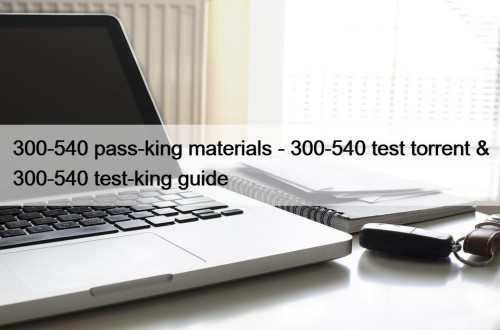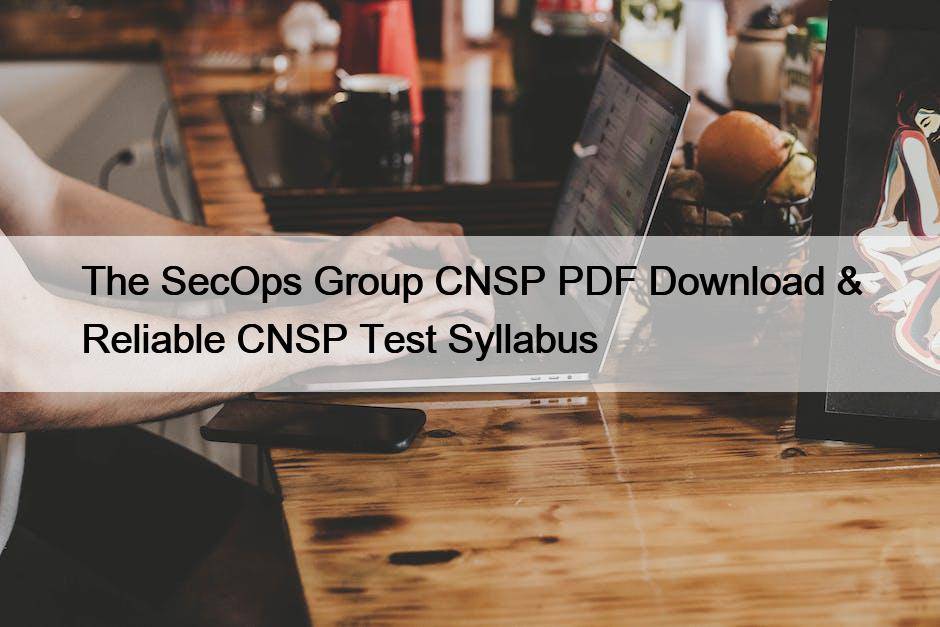Most Popular
 300-540 pass-king materials - 300-540 test torrent & 300-540 test-king guide
300-540 pass-king materials - 300-540 test torrent & 300-540 test-king guide
Do you still have doubts about the quality of the ...
 CISM Test Result - Practice CISM Exams
CISM Test Result - Practice CISM Exams
BTW, DOWNLOAD part of BraindumpsPass CISM dumps from Cloud Storage: ...
 Salesforce OmniStudio-Consultant Test Objectives Pdf & Latest OmniStudio-Consultant Exam Topics
Salesforce OmniStudio-Consultant Test Objectives Pdf & Latest OmniStudio-Consultant Exam Topics
2025 Latest PassCollection OmniStudio-Consultant PDF Dumps and OmniStudio-Consultant Exam Engine ...



The SecOps Group CNSP PDF Download & Reliable CNSP Test Syllabus

There are three versions of our CNSP learning engine which can allow all kinds of our customers to use conveniently in different situations. They are the PDF, Software and APP online versions. I specially recomend the APP online version of our CNSP Exam Dumps. With the online app version of our CNSP actual exam, you can just feel free to practice the questions in our CNSP training materials on all kinds of electronic devices, such as IPAD, telephone, computer and so on!
The SecOps Group CNSP Exam Syllabus Topics:
| Topic | Details |
|---|---|
| Topic 1 |
|
| Topic 2 |
|
| Topic 3 |
|
| Topic 4 |
|
| Topic 5 |
|
| Topic 6 |
|
| Topic 7 |
|
| Topic 8 |
|
| Topic 9 |
|
| Topic 10 |
|
| Topic 11 |
|
>> The SecOps Group CNSP PDF Download <<
Top CNSP PDF Download | Valid Reliable CNSP Test Syllabus: Certified Network Security Practitioner
Where can you purchase the best quality and cheapest CNSP exam dumps? RealValidExam will meet all examinees'needs with cheaper price and high quality CNSP exam dumps and answers. The sales of CNSP certification training materials on RealValidExam site is in front of the same work areas. The passing rate of our CNSP VCE Dumps is 100%. In a word, choosing RealValidExam for you to pass CNSP test is equal to choose success.
The SecOps Group Certified Network Security Practitioner Sample Questions (Q35-Q40):
NEW QUESTION # 35
In a Linux-based architecture, what does the /mnt directory contain?
- A. Temporary-mounted filesystems
- B. System configuration files and initialization scripts
- C. Loadable driver modules needed to boot the system
- D. System files which represent the current state of the kernel
Answer: A
Explanation:
The Linux Filesystem Hierarchy Standard (FHS), per FHS 3.0, defines directory purposes:
/mnt: Designated for temporarily mounted filesystems, typically by system administrators.
Use: Mount points for removable media (e.g., USB drives: mount /dev/sdb1 /mnt/usb) or network shares (e.g., NFS).
Nature: Transient, user-managed, not persistent across reboots (unlike /etc/fstab mounts).
Contrast:
/media: Auto-mounts removable devices (e.g., by desktop environments like GNOME).
/mnt vs. /media: /mnt is manual, /media is system-driven.
Technical Details:
Empty by default; subdirectories (e.g., /mnt/usb) are created as needed.
Permissions: Typically root-owned (0755), requiring sudo for mounts.
Security Implications: Misconfigured /mnt mounts (e.g., world-writable) risk unauthorized access. CNSP likely covers mount security (e.g., nosuid option).
Why other options are incorrect:
B . System config/init scripts: Found in /etc (e.g., /etc/passwd, /etc/init.d).
C . Driver modules: Located in /lib/modules/<kernel-version>.
D . Kernel state: Resides in /proc (e.g., /proc/cpuinfo).
Real-World Context: Admins mount ISOs at /mnt during server provisioning (e.g., mount -o loop image.iso /mnt).
NEW QUESTION # 36
Which of the following commands will work on a Microsoft operating system to add a new domain admin user?
- A. net user John /add /domain /admin
- B. net user John "Domain Admins" /add /domain
- C. net group "Administrator" John /add
- D. net group "Domain Admins" John /add /domain
Answer: D
Explanation:
Adding a user to a domain group like "Domain Admins" requires the correct command and scope (domain vs. local).
Why A is correct: net group "Domain Admins" John /add /domain adds user John to the domain-level "Domain Admins" group, per CNSP's domain privilege management.
Why other options are incorrect:
B: net user creates users, not group memberships; syntax is wrong.
C: /admin is invalid; correct group specification is missing.
D: Targets local "Administrator" group, not domain "Domain Admins".
NEW QUESTION # 37
Which of the following is not a DDoS attack?
- A. NTP Amplification
- B. Brute Force
- C. SYN Flood
- D. UDP Flood
Answer: B
Explanation:
DDoS (Distributed Denial of Service) attacks aim to overwhelm a target's resources with excessive traffic, disrupting availability, whereas other attack types target different goals.
Why D is correct: Brute force attacks focus on guessing credentials (e.g., passwords) to gain unauthorized access, not on denying service. CNSP classifies it as an authentication attack, not a DDoS method.
Why other options are incorrect:
A: SYN Flood exhausts TCP connection resources, a classic DDoS attack.
B: NTP Amplification leverages amplified responses to flood targets, a DDoS technique.
C: UDP Flood overwhelms a system with UDP packets, another DDoS method.
NEW QUESTION # 38
Which one of the following services is not a UDP-based protocol?
- A. SSH
- B. IKE
- C. SNMP
- D. NTP
Answer: A
Explanation:
Protocols are defined by their transport layer usage (TCP or UDP), impacting their security and performance characteristics.
Why D is correct: SSH (Secure Shell) uses TCP (port 22) for reliable, connection-oriented communication, unlike the UDP-based options. CNSP contrasts TCP and UDP protocol security.
Why other options are incorrect:
A: SNMP uses UDP (ports 161, 162) for lightweight network management.
B: NTP uses UDP (port 123) for time synchronization.
C: IKE (IPsec key exchange) uses UDP (ports 500, 4500).
NEW QUESTION # 39
How many octets are there in an IPv6 address?
- A. 0
- B. 1
- C. 2
- D. 3
Answer: B
Explanation:
An IPv6 address, defined in RFC 4291, is a 128-bit address designed to replace IPv4's 32-bit scheme, vastly expanding address space (2
Tags: CNSP PDF Download, Reliable CNSP Test Syllabus, CNSP Reliable Exam Registration, CNSP Latest Dump, CNSP Valid Exam Pass4sure